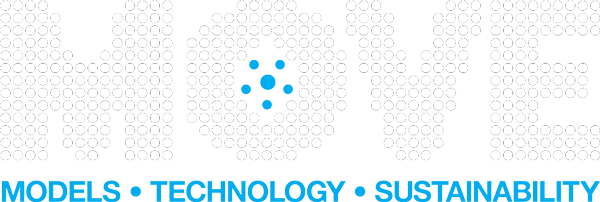MOVE 2025 AGENDA
All times are listed in BST.
Select the dates to choose between Conference Day 1 and Day 2.

London, 18 - 19 June 2025
Schedule
Create your personal agenda –check the favourite icon
AI and the future of mobility
Transitioning to electric fleets
The age of autonomous
Designed to Delight: inside the development of next generation vehicle experiences
Software-defined products are revolutionizing how customers derive value from manufactured goods. The approach has shifted from large, discrete transactions to an ongoing, dynamic exchange between providers and users. Experience simulation bridges the gap between end-user experiences and systems engineering, facilitating a comprehensive development environment for the continuous delivery of design and offerings.
1. Design and validate vehicle-passenger interactions.2. Visualize requirements for pilots and ground operations in the context of hydrogen-powered aviation.3. Model and simulate complex stakeholder interactions in vehicle-to-everything (V2X) safety systems.4. Design experiences for autonomous urban mobility infrastructure.
In this keynote we will explore these innovations and their implications for the future of product development and user engagement.
Navigating the future: The evolution of Mobility Services in a Sustainable World
What do we do at MICHELIN MOBILITY INTELLIGENCE to empower transportation experts with innovative data products that facilitate a Better Life in Motion
Big Picture: Understanding G2B is mission critical to the transition to the mobility future
Government policy on a global scale will define key elements of the transition to the mobility future. The impact of President Trump’s policy agenda and Europe’s response are critical. In other words, before B2B, B2C, and even B2G, one must understand G2B. The transition to EVs and Software Defined Vehicles (and everything else) is either led by or modulated by government. Geopolitical strategy, rules on energy transition and sustainability, and digital transformation define the mobility environment. Understanding G2B is mission critical. We will explore the G2B context and show its relevance to the mobility industry.
The road to electrification in Asia
Breaking legacy mindsets in the SDV transformation of OEMs
Collaborative pathways to net zero: integrating local strategies with network investments
Defining charging experience for cross-segment EVC manufacturing
Defining charging experience for cross-segment EVC manufacturing
As electric vehicle adoption accelerates across personal, public, and commercial domains, the need for a unified yet flexible charging experience becomes critical. This presentation explores how to design and standardize charging interactions across diverse segments—ranging from private home users to heavy-duty truck fleets and public transit systems.
We'll explore the unique expectations, environments, and technical requirements of each user group, and introduce a modular experience design framework that enables scalable, seamless, and segment-sensitive charging solutions. From hardware to software, and from depot to driveway, we’ll define what it means to deliver a future-ready, user-centric EVC charging experience across the mobility ecosystem.
Captains of change: leadership insights on orchestrating the future of transport
Changing mobility landscape in world's 8th largest economy
Where are we heading with autonomous technology?
Circular economy: Insights from Toyota
Accelerating commercial vehicle decarbonisation
Building-up market confidence to support the transition to sustainable mobility technologies
What does EV charging being ready for 2030 mean?
Scaling up micromobility: Bird’s story
Implementing autonomous mobility in Europe - a first lessons learned
Building resilient smart city infrastructure
Differentiating the customer charging experience
Driving the Future of Sustainable Transport
Panel: Telematics, data integration & AI: transforming the future of fleet management
Panel: What does the ideal connected car look like?
Panel: V2G: how EVs are aiding flexibility and grid electrification
Panel: How are automotive OEMs adapting to new challenges?
Panel: How to WOW a customer in New Mobility
Panel: What policymakers need to do next for AVs
Panel: Securing funding for large scale infrastructure projects
Panel: How to foster innovation whilst prioritising the customer experience
Panel: How industry and legislators are driving the shift to sustainable mobility
Driving Fleet ROI: Bosch Solutions for Maximum Value — Real-world success stories of data-driven services to optimize your bottom line
Circularity: economic imperative or regulatory imperative?
Beyond Ownership: Building Seamless, User-Centric Mobility Platforms
Panel: Urban planning: reimagining public spaces
Perspectives: Understanding G2B is mission critical to the transition to the mobility future
This roundtable builds directly on the themes introduced in the opening presentation.
Government policy on a global scale will define key elements of the transition to the mobility future. The impact of President Trump’s policy agenda and Europe’s response are critical. In other words, before B2B, B2C, and even B2G, one must understand G2B. The transition to EVs and Software Defined Vehicles (and everything else) is either led by or modulated by government. Geopolitical strategy, rules on energy transition and sustainability, and digital transformation define the mobility environment. Understanding G2B is mission critical. We will explore the G2B context and show its relevance to the mobility industry.
From data to decisions: How real-time data insights impact EV drivers and drive growth
Mapping the investment landscape: Opportunities in Southeast Asia
Managing parking in a public sector commercial environment
NextGen auto sales: how AI + live engagement outperform traditional digital sales
Ditch outdated CX models—here’s how AI-driven, agentic customer engagement wins on cost, speed, and conversion.
Panel: Electrification: best practices in procuring new e-fleets and key markers for success
Panel: How AI in mobility is shifting the mobility landscape
Panel: Scaling up public fast charging technology & demand response programmes
Panel: Leveraging mobility patterns to curb private car usage and enhance customer experience
Panel: Business cases for autonomous vehicles in fleets
Panel: Dealership of the future: the modern business model for the OEM
Panel: ESG: how to make clean and accessible transport available for all?
Panel: Driving smart city innovation: investment and implementation
Driving change together: The ChargePoint Navigator approach to EV infrastructure planning for Local Authorities
The second wave of autonomous technology: How robotaxis will transform the commercial landscape
Smart financing for smart infrastructure: investing in our charging capability
Are we hallucinating about new business building? Insights into AI, new business building and innovation at BMW
EMT Madrid’s sustainable financial framework
An overview of the Waymo drive
Wired-for-success: V2G & the electrification of a 10000-vehicle fleet
Delivering value through electric vehicle logistics
Delivering value through electric vehicle logistics
Accelerating the transition to end-to-end sustainable logistics
Scaling fast charging for fleets depots for half the cost and hassle
EV charging in Europe: trends, forecasts, and the road to 2035
EV charging in Europe: trends, forecasts, and the road to 2035
Evolution of business models for autonomous technology
Panel: One year after the UK’s Automated Vehicle Act: Reflections and next steps
Panel: Establishing charging hubs in fleet depots and procuring charging infrastructure
Panel: How are SDVs transforming the car industry?
Panel: Investment: ensuring the charging industry matures rapidly to meet EV demand
Panel: How is the mobility start-up landscape evolving?
Panel: How we can use digital platforms to best enable MaaS
Panel: Rethinking AVs: from public panic to technological breakthroughs
Panel: Decarbonising the mobility infrastructure network: what does it take?
Growing the in-vehicle commerce market
Challenges of transitioning to a zero-emission fleet
AI-Powered Mobility: driving innovation, fueling the energy challeng
Ingredients for a winning fast charging business model
Winning the mobility transformation: how leaders shape tomorrow’s workforce
Redefining corporate travel through carsharing
The latest in autonomous aviation for logistics
Reimagining the road network to achieve net zero mobility
Re-engineering automotive retail: innovations in evolving technologies to match buyer needs
Leveraging start-up innovation to support a sustainable future
Panel: EV policy: understanding the impacts of trade barriers, tariffs and incentives
Panel: How open data frameworks are empowering the mobility space
Panel: How to solve the challenge of charging standardisation and interoperability?
Panel: Circular economy: opportunities from zero-waste in mobility
HoppyGo: A mobility platform growing under OEM oversight
Panel: Making AVs inclusive: matching autonomous tech to societal need
Panel: How ITS and open data are helping with managing traffic safely and efficiently
Panel: Conquering range anxiety and unlocking affordable EVs
Panel: Conquering range anxiety and unlocking affordable EVs
Panel: Fifteen-minute cities & the best tools to reduce emissions in city centres
Fireside Chat: Affordable, driverless cars for all
EVs: charging, infrastructure, adoption
Create your personal agenda –check the favourite icon
The software-defined vehicle
Localising the battery supply chain
Fleet data unleashed: Transforming raw data into revenue
Dinosaurs on the cliff: the win-win secrets of corporate & VC collaborations
Defining charging experience for cross-segment EVC manufacturing
As electric vehicle adoption accelerates across personal, public, and commercial domains, the need for a unified yet flexible charging experience becomes critical. This presentation explores how to design and standardize charging interactions across diverse segments—ranging from private home users to heavy-duty truck fleets and public transit systems.
We'll explore the unique expectations, environments, and technical requirements of each user group, and introduce a modular experience design framework that enables scalable, seamless, and segment-sensitive charging solutions. From hardware to software, and from depot to driveway, we’ll define what it means to deliver a future-ready, user-centric EVC charging experience across the mobility ecosystem.








































































































































































































































































































































































































































































































